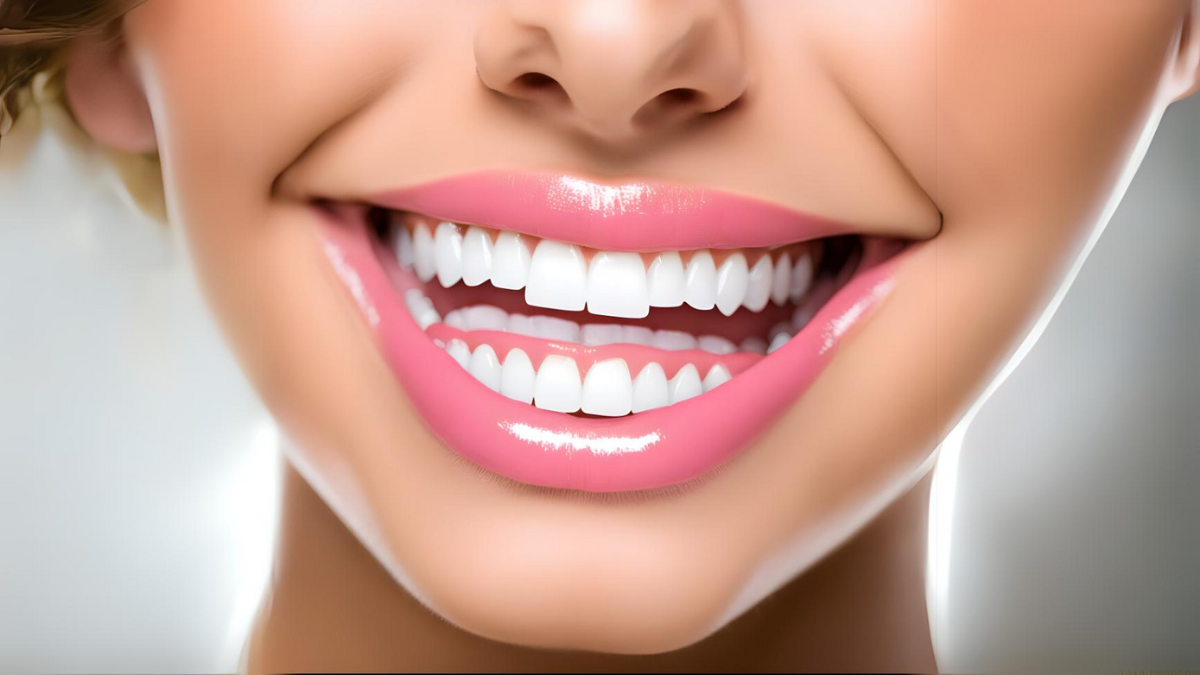I. Introduction
When it comes to dental health, maintaining a bright and healthy smile is a top priority for many. This comprehensive guide will walk you through the importance of dental health, the basics of teeth whitening, and the essentials of general dental checkup in Perth.
A. Importance of Dental Health
Your dental health plays a crucial role in your overall well-being. Healthy teeth and gums not only boost your self-confidence but also contribute to your ability to eat, speak, and smile comfortably. Neglecting dental health can lead to a range of issues, from cavities to gum disease, which can have far-reaching consequences.
B. Overview of Teeth Whitening and Dental Checkups
Teeth whitening is a popular cosmetic dental procedure that can help you achieve a brighter smile. Alongside teeth whitening, regular dental checkups are essential for preventing dental problems and maintaining overall oral health. Let’s delve deeper into the world of teeth whitening Perth.
II. Understanding Teeth Whitening
A. Types of Teeth Stains
Teeth stains can be categorized into two main types:
- Extrinsic Stains Extrinsic stains are surface stains caused by external factors such as coffee, tea, red wine, and tobacco use. These stains can often be removed through teeth whitening procedures.
- Intrinsic Stains Intrinsic stains, on the other hand, are deeper and occur within the tooth’s structure. These stains can result from factors like genetics, aging, or excessive fluoride consumption and may require more intensive whitening methods.
B. Common Causes of Teeth Discoloration
Understanding the causes of teeth discoloration is key to maintaining a bright smile. Common culprits include:
- Poor oral hygiene
- Aging
- Certain medications
- Trauma to the teeth
- Fluorosis
C. Benefits of Teeth Whitening
Teeth whitening perth offers several benefits, including:
- Enhanced confidence and self-esteem
- A more youthful appearance
- Improved oral hygiene habits
- Increased attractiveness
III. Teeth Whitening Methods
There are various methods available for teeth whitening, catering to different preferences and needs:
A. In-Office Teeth Whitening
In-office teeth whitening is a quick and effective way to achieve dramatic results. Dentists use professional-grade bleaching agents and specialized equipment to brighten your teeth in a single session.
B. At-Home Teeth Whitening
At-home teeth whitening kits allow you to whiten your teeth in the comfort of your own home. These kits typically include custom-fitted trays and whitening gel. While results may take longer to achieve compared to in-office treatments, they are still effective.
C. Natural Teeth Whitening Remedies
For those looking for natural alternatives, various home remedies can help whiten teeth, including baking soda, activated charcoal, and oil pulling.
D. DIY Teeth Whitening Kits
DIY teeth whitening kits are available over the counter and offer a cost-effective way to brighten your smile. These kits often include whitening strips or pens.
IV. Choosing a Dental Clinic in Perth
A. Factors to Consider
When selecting a dental clinic in Perth for teeth whitening or general checkups, consider the following factors:
- Reputation
- Services Offered
- Cost
- Location
B. Finding the Right Dentist
Selecting the right dentist is crucial for your dental health. Look for a dentist who is experienced, compassionate, and capable of addressing your specific needs.
V. Importance of Regular Checkups
Regular dental checkups are vital for maintaining your oral health. These appointments allow your dentist to detect and address dental issues early, preventing more significant problems down the road.

VI. Teeth Whitening Process
A. Consultation with a Dentist
Before undergoing teeth whitening, it’s essential to consult with a dentist. They will assess your oral health, discuss your goals, and recommend the most suitable whitening method.
B. Treatment Planning
Once your dentist determines that teeth whitening is appropriate for you, they will create a personalized treatment plan. This plan may include selecting the whitening method, setting expectations for results, and addressing any concerns.
C. Whitening Procedure
The actual whitening procedure varies depending on the chosen method. In-office treatments involve the application of a whitening agent to your teeth, followed by the use of special equipment to accelerate the process. At-home kits typically require daily application of whitening gel using custom-fitted trays.
D. Aftercare and Maintenance
After teeth whitening, your dentist will provide guidance on maintaining your results. This may include recommendations for avoiding stain-causing foods and beverages and using touch-up treatments as needed.
VII. At-Home Teeth Whitening
A. Pros and Cons
At-home teeth whitening offers both advantages and disadvantages:
Pros:
- Convenience and flexibility
- Lower cost compared to in-office treatments
- Comfortable application in your own space
Cons:
- Slower results compared to in-office treatments
- Potential for uneven whitening
- Requires consistency and commitment
B. Steps for At-Home Teeth Whitening
If you choose at-home teeth whitening, follow these general steps:
- Consult with your dentist for recommendations.
- Purchase an over-the-counter whitening kit or obtain a custom-made kit from your dentist.
- Follow the instructions provided for daily use.
- Monitor your progress and adjust as necessary.
C. Safety Precautions
Ensure the safety of your at-home teeth whitening by:
- Following the instructions carefully.
- Avoiding overuse, which can lead to tooth sensitivity.
- Reporting any adverse effects to your dentist.
VIII. Natural Teeth Whitening Remedies
A. Baking Soda and Hydrogen Peroxide
A mixture of baking soda and hydrogen peroxide can act as a mild abrasive to remove surface stains. Use this remedy sparingly to avoid damaging your enamel.
B. Oil Pulling
Oil pulling involves swishing a tablespoon of coconut or sesame oil in your mouth for 15-20 minutes. This practice may help remove stains and promote oral health.
C. Activated Charcoal
Activated charcoal is known for its absorbent properties and can help remove surface stains when used as a toothpaste or powder.
D. Strawberries and Baking Soda
A mixture of mashed strawberries and baking soda can be used as a natural whitening agent due to the fruit’s malic acid content.
Incorporating these natural remedies into your oral care routine may help maintain a whiter smile. However, it’s important to consult with your dentist before trying any DIY methods to ensure they are safe for your teeth.
IX. Overview of Popular Kits
DIY teeth whitening kits have gained popularity for their accessibility and ease of use. Some popular options include whitening strips, pens, and LED light kits. These kits typically contain whitening agents and instructions for at-home use.
B. How to Use DIY Kits Safely
To use DIY teeth whitening kits safely:
- Read and follow the kit’s instructions carefully.
- Start with a clean and dry mouth.
- Apply the whitening agent as directed, avoiding the gums.
- Use any provided accessories, such as trays or LED lights, according to the instructions.
- Keep within the recommended treatment duration.
- Rinse thoroughly after treatment.
- If you experience any adverse effects, discontinue use and consult your dentist.
C. Effectiveness and Considerations
The effectiveness of DIY teeth whitening kits can vary depending on the product and individual factors. Consider the following:
- Whitening Level: DIY kits may provide subtle whitening, while in-office treatments can offer more dramatic results.
- Consistency: Achieving desired results may require consistent use over several weeks.
- Stain Types: DIY kits are generally effective against extrinsic stains but may have limited impact on intrinsic stains.
- Safety: Prioritize safety by not exceeding recommended usage and consulting with a dentist before use.
X. Managing Teeth Sensitivity
A. Causes of Sensitivity
Teeth sensitivity can be triggered by various factors, including:
- Whitening Agents: Some people may experience sensitivity when using whitening products.
- Enamel Wear: Worn enamel can expose the dentin, leading to sensitivity.
- Gum Recession: Receding gums can expose sensitive tooth roots.
B. Tips for Minimizing Sensitivity during Whitening
To minimize sensitivity during whitening:
- Choose a lower concentration of whitening agent.
- Use a toothpaste designed for sensitive teeth.
- Apply a desensitizing gel before or after whitening.
- Limit acidic and hot/cold foods and beverages after whitening.
XI. Potential Risks and Side Effects
A. Gum Irritation
Gum irritation is a common side effect of teeth whitening. It can result from the contact of whitening agents with the gums. To minimize this risk, apply the product carefully, and consider using a protective barrier like petroleum jelly on the gums.
B. Tooth Sensitivity
Teeth sensitivity during or after whitening is also common. It is often temporary and can be managed with desensitizing toothpaste or gels. If sensitivity persists, consult your dentist.
C. Overuse Risks
Overusing DIY whitening kits can lead to adverse effects, including enamel damage and extreme tooth sensitivity. Stick to the recommended usage guidelines and consult your dentist if you have concerns.
A. Pregnant Women
Pregnant women are advised to avoid teeth whitening procedures during pregnancy due to potential risks associated with the chemicals used in whitening agents. It’s essential to prioritize the health of both the mother and the baby. Consult your dentist for safe alternatives or postpone whitening until after childbirth.
B. Individuals with Dental Restorations
Teeth whitening may not be suitable for individuals with certain dental restorations, such as dental crowns, veneers, or fillings. Whitening agents do not affect these materials, which can result in uneven tooth color. Consult with your dentist to explore alternative cosmetic options for a consistent smile.
C. Children and Teens
Teeth whitening is generally not recommended for children and teenagers, as their teeth and gums are still developing. Instead, encourage good oral hygiene practices, including regular dental checkups and cleanings. Consult with a pediatric dentist if concerns about tooth discoloration arise.
XIII. Maintaining White Teeth
A. Good Oral Hygiene Practices
Sustaining white teeth requires consistent oral hygiene practices:
- Brush your teeth at least twice a day with fluoride toothpaste.
- Floss daily to remove plaque between teeth.
- Rinse with an antimicrobial mouthwash to reduce bacteria.
- Visit your dentist regularly for checkups and cleanings.
B. Diet and Lifestyle Considerations
Maintaining white teeth also involves making smart dietary and lifestyle choices:
- Limit consumption of stain-causing foods and beverages, such as coffee, tea, red wine, and berries.
- Use a straw when drinking beverages that may stain teeth.
- Quit smoking and avoid tobacco products, which can cause severe tooth discoloration.
C. Touch-Up Whitening
Consider periodic touch-up whitening treatments to combat stains that may accumulate over time. Consult your dentist for guidance on the frequency and type of touch-up treatment that is suitable for your needs.
Conclusion
Achieving and maintaining a bright, white smile is a goal shared by many. Understanding the types of teeth stains, available whitening methods, and the importance of regular dental checkups is essential for a successful teeth whitening journey. While DIY kits offer convenience, it’s crucial to use them safely and be aware of potential side effects.
For special cases, such as pregnancy or dental restorations, consult your dentist for personalized guidance. Children and teenagers should prioritize good oral hygiene practices and regular dental visits instead of teeth whitening.
To keep your smile radiant, maintain good oral hygiene, make wise dietary choices, and consider periodic touch-up whitening treatments as needed.

